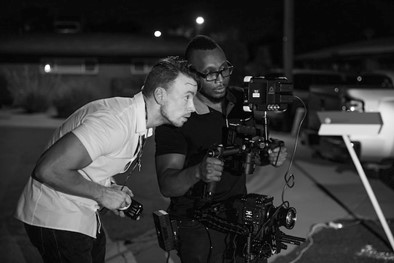Travis Preston of CalArts works as the artistic director at the Center for New Performance, and the Dean of the School of Theater. In the following article, Travis Preston describes the director’s role in productions, and the skills they need for a successful production.
Although actors may occupy the most visible role in a theater production, the success of a production often lives or dies with the director. As the key visionary behind a play or musical, directors perform essential duties in the theater arts.
Travis Preston of CalArts explains that directors analyze scripts and work with cast and crew to determine the best possible path to bring their vision of a performance onto the stage. Good directors must possess the ability to see how their choices will play out practically and creatively, as well as the ability to effectively communicate and collaborate with others.
Before getting into the primary skills every theater director must utilize, however, it is important to outline their tangible duties and why they are so fundamental when aiming to mount a successful production.
Travis Preston on What a Theater Director Does
In the briefest sense of the term, Travis Preston of CalArts says that a director is simply the supervisor of a production. They direct cast and crew on how to design sets, block performances, act through key scenes, and utilize fundamental stage elements such as lighting and costume design to best tell a story while also highlighting its core themes and hitting every underlying emotional beat.
Over the course of a production, Travis Preston of CalArts says that theater directors will accomplish these broad goals by carrying out a number of smaller, more specific tasks. These include, but are not limited to:
- Analyzing a script to determine the most important themes that must be communicated to the audience
- Conducting read-throughs to help actors understand their characters’ emotional path
- Deciding physical character movements that effectively portray key story beats to the audience
- Working with stage managers to ensure all crews understand their roles
- Communicating all necessary sound and lighting cues to the crew
- Leading dress rehearsals to identify issues before the first scheduled performance
- Monitoring audience reactions to important scenes and adjusting if necessary

Skills Every Director Should Have
Because of the large number of responsibilities set in front of them, anyone wishing to take up the mantle of theater director and excel at this craft will need to develop a wide variety of skill sets. Travis Preston of CalArts says that these include:
- The ability to analyze and interpret scripts creatively
- A flair for effective storytelling techniques
- Enough emotional intelligence to identify subtle character moments
- Effective communication skills
- A penchant for working with others from varying walks of life
- Keen time management skills to ensure everything is done before the first curtain rises
- Unflappable resilience in the face of unexpected setbacks
In short, Travis Preston of CalArts says that creativity alone does not make a good director. Those who will truly excel possess both empathy and strong communication skills, which help not only in the task of working with numerous cast and crew members, but also with the task of intuitively knowing how audiences will perceive a scene and how to relay it most effectively.
The Director’s Role in Context
Travis Preston of CalArts says that while directors must oversee the several key elements that make up a theater arts production, a number of other crew members ultimately bear the responsibility for accurately representing the director’s vision on the stage. To this end, the American Association of Community Theatre suggests directors see their role primarily as a collaborative one.
A director will fail to get very far by treating their crew as mere underlings rather than autonomous artists of their own creative merit, they must see the importance in how tasks performed by one member of the team affect all the others. Travis Preston of CalArts maintains that failure to understand the collaborative process from beginning to end will increase the odds of setbacks.
For instance, the lighting designer cannot adequately perform their duties until the set design, costume design, and character blocking are all in place. Travis adds that decisions made in regard to the lighting design may still necessitate changes to the previous areas as well.
Directors may therefore see themselves as individuals put in charge of assembling a jigsaw puzzle in which the puzzle pieces are often changing shape. Only by consistently assessing each piece both individually and as a whole can they direct their team to best combine their efforts toward the creation of a singular, coherent picture.
Conclusion
A director’s role in theater arts productions will change ever so slightly in accordance with each particular play. However, understanding their core tasks and the skills necessary for achieving a solid collaboration with their cast and crew will enable them to more effectively perform their duties.









